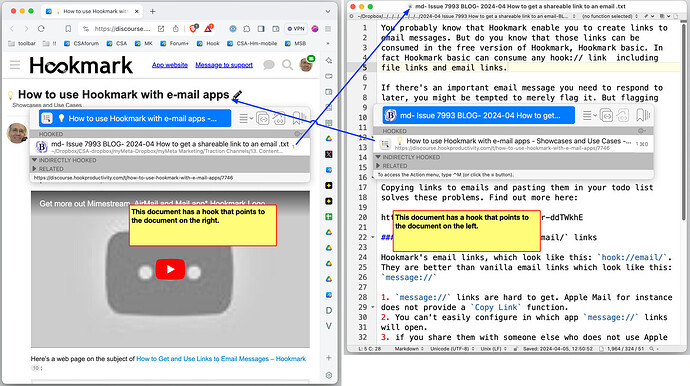Wondering what a “hook” is? Hooks between documents can be created via Hook to Copied Link or the Hook to New command.
A hook involves a bookmark (a link) that is associated with (“contained in”) an item (call it “Foo”) and that points to another item (call it “Bar”), where Bar has a bookmark that points to “Foo”. So you can think of a hook as a pair of links, each member of the pair points to the other document.
Here’s an example where a web page (on the left) contains a link to a text document (open in BBEdit) on the right.
- On the left, you see that the name of the hook is md- Issue 7993 BLOG- 2024-04 How to get a shareable link to an email .txt, which is the name of the document on the right.
- On the right, you see that the name of the hook is
 How to use Hookmark with e-mail apps…
How to use Hookmark with e-mail apps…
Hooks make it very easy to navigate back and forth between two related resources.
A common use case for hooks is when you need to take notes about a web page or PDF.
Another set of use cases is when you are writing a document. You can hook your draft to:
- the outline
- the title file
- your notes about the document
- supporting information (e.g., PDFs and web pages)
- key emails (e.g., from reviewers).
That way, while you are writing you can easily consult the hooked information, and then get back to your draft — without needing to search or rummage through folders and lists.
The easiest way to get the hang of hooks is by using the Hook to New... command. You can try it on this web page. This command creates a new ‘note’ (in the app of your choice) and hooks the new note to the original context (here a web page).
See also these help pages:
Questions?
The concept is new (not in macOS) and abstract. So don’t be shy to ask here, or send us an email support@cogsciapps.com.
